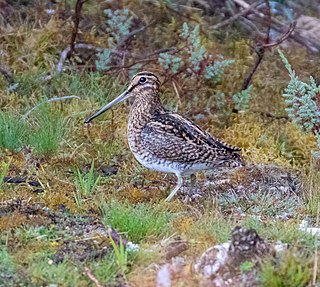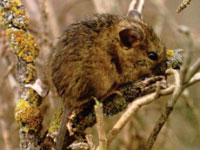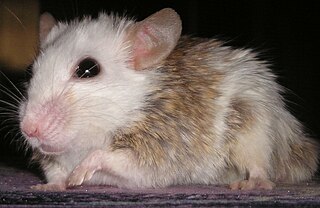
The rodent subfamily Sigmodontinae includes New World rats and mice, with at least 376 species. Many authorities include the Neotominae and Tylomyinae as part of a larger definition of Sigmodontinae. When those genera are included, the species count numbers at least 508. Their distribution includes much of the New World, but the genera are predominantly South American, such as brucies. They invaded South America from Central America as part of the Great American Interchange near the end of the Miocene, about 5 million years ago. Sigmodontines proceeded to diversify explosively in the formerly isolated continent. They inhabit many of the same ecological niches that the Murinae occupy in the Old World.

Apodemus is a genus of Muridae. The name is unrelated to that of the Mus genus, instead being derived from the Greek ἀπό-δημος.

The puna snipe is a bird in tribe Scolopancinai and subfamily Scolopacinae of family Scolopacidae, the sandpipers and relatives. It is found in Argentina, Bolivia, Chile, and Peru.

Reithrodontomys is the genus of groove-toothed New World harvest mice.

The eastern broad-toothed field mouse is a species of rodent in the family Muridae.
The rufous-bellied bolo mouse or white-chinned akodont, is a species of rodent in the family Cricetidae. It is found in Argentina and Bolivia where it inhabits the dry valleys of the eastern Andes. Its conservation status is listed by the International Union for Conservation of Nature as being of "least concern".
Habromys is a genus of rodent in the family Cricetidae, found in Mexico and Central America. It contains these species, all but one of which are threatened or endangered, five of them critically so. H. lophurus is near threatened.

Mastomys is a genus of rodent in the family Muridae endemic to Africa. It contains eight species:

Pogonomys is a genus of rodent in the family Muridae, found in New Guinea and the D'Entrecasteaux Islands, with one species being found also in Australia.

The Hastings River mouse is a species of Australian rodent in the subfamily Murinae of the family Muridae. It is found only in Australia.
The puna mouse is a species of rodent in the family Cricetidae. It is endemic to southern Peru, where it is found in puna habitat at elevations of 4400 to 4900 m in the Cordillera Occidental.

Steatomys is a genus of rodent in the family Nesomyidae. It contains the following species:

The puna plover is a species of bird in subfamily Charadriinae of family Charadriidae. It is found in Argentina, Bolivia, Chile, and Peru.

The puna miner is a passerine bird in the subfamily Sclerurinae, the leaftossers and miners, of the ovenbird family Furnariidae. It is found in Argentina, Bolivia, Chile, and Peru.

The puna thistletail is a species of bird in the Furnariinae subfamily of the ovenbird family Furnariidae. It is found in Peru and Bolivia.

The puna tapaculo is a species of bird in the family Rhinocryptidae. It is found in Bolivia and Peru.
The eastern puna mouse is a species of rodent in the family Cricetidae. It is endemic to southern Peru, where it is found in moist areas within puna grassland at elevations of 4500 to 4800 m in the Kallawaya mountain range, a section of the Cordillera Oriental.

The variable hawk is a polymorphic species of bird of prey in the family Accipitridae.

The Central Andean puna is a montane grasslands and shrublands ecoregion in the Andes of southern Peru, Bolivia, and northern Chile and Argentina.
Rhogeessa velilla, also called the Ecuadorian little yellow bat, is a species of vesper bat in the genus Rhogeessa. It is found in Northwestern Peru and parts of Ecuador. The species was previously included in R. io, but is now recognized as a separate species. Very little is known about this species, though it is generally considered to be insectivorous.














